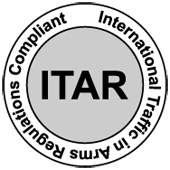- Services
- Metals (overview)
- Plastics (overview)
- CAD Design
- Rapid Prototyping
& Rapid Tooling - CNC Machining
- Finishing & Assembly
- Rubber Plaster Molding
- Precision Airset Sand Casting
- Graphite Mold Die Casting
- One-Shot Casting
- Reaction Injection Molding (RIM)
- Rapid Injection Molding
- Design for Manufacturability (DFM)
Technical Information: Plaster Mold Process
(Rubber Plaster Mold - RPM) for Metal Casting
Download the PDF version of this document
How, When & Why to Use It:
- To produce precision and premium quality aluminum and zinc castings.
- For aesthetic applications where appearance is critical.
- Prototyping - to assist engineering in debugging design before committing to hard tooling.
- For low volume applications where quantities do not justify die cast tooling.
- For high volume applications of complex or unusual shapes.
- For castings with thin walls or where weight is critical.
- To simulate die castings for prototype and pilot production.
- Tooling is low cost and allows ease of modification.
- To reduce "time to market" on new programs and evaluate market potential.
- To reduce time for machining and secondary operations.
- To fill the gap if dies are lost, damaged or delayed.
- To assist and reduce time for U.L. approval.
Design & Technical Information
Size
No limitation but best range within 2 in. cube to 36 in. cube.
Finish
Can hold 63 micro-inch, but normally 90 micro-inch.
Shape
Considerable design freedom for unusual and complex shapes.
Wall thickness
Thin wall: 0.030 in. - 0.060"
Average: 0.080 in. - 0.120 in.
Thick wall: 0.180 in. - 0.500 in.
General tolerances
0 in. - 2 in. +/- 0.010 in.
2 in. - 3 in. +/- 0.012 in.
3 in. - 6 in. +/- 0.015 in.
6 in. - 12 in. +/- 0.020 in.
12 in. - 18 in. +/- 0.030 in.
18 in. - 30 in. +/- 0.040 in.
Limitations
The process is limited to non-ferrous metals with pouring temperatures below 2,000 °F - this includes aluminum, zinc casting alloys and some copper based alloys.
Holes
Not economical to cast small holes (1/4 in. or less) unless odd shape or inaccessible areas for machining.
Alloys
All aluminum and zinc casting alloys to the commercial and military specifications. See separate technical sheet.
Draft
Typically 1/2 to 2 degrees.
Zero draft is possible in specified areas.
Corner radii and fillets as required, typically 1/16 in.
Mechanical properties
Tensile - Yield - Elongation - as per the appropriate commercial and military specifications. See separate technical sheet.
Tooling - pattern equipment
- Loose pattern - to expedite for up to 20 pieces.
- Epoxy resin - usually up to 500 pieces.
- Metal - aluminum or brass - used to obtain best tolerance and quality.
- Rubber - for quantities up to 1,000 pieces. Tooling can be duplicated easily from master tooling to expedite delivery or for higher volumes.
Cost
Rule of thumb for complex shapes within a 15 in. cube:
Tooling: 10% of die cast tools.
Piece price: 10 times die casting price.
Delivery
1 - 2 weeks for simple parts.
6 - 8 weeks for complex parts.
Typical applications
- Castings for telecommunications, business machines, medical equipment, computers, automotive, aerospace, electronics and robotics.
- Molds for plastics industry - rotational molds, vacuum form, expanded polystyrene molds, kirksite injection molds.
Plaster and Sand Molding Combination
For castings requiring high metallurgical integrity verified by radiographic and fluorescent penetrant inspection. When used in combination with no bake sand molds the properties of plaster mold castings can be enhanced considerably by taking advantage of the faster cooling rates inherent in sand molds in combination with the insulating aspect of plaster molds.




